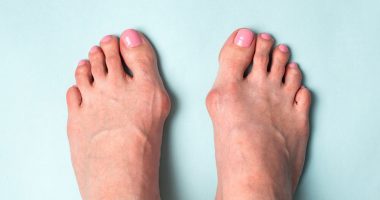Hip ligament injury
Definition
A hip ligament damage is a severe injury in which one or more of the ligaments that usually hold the ball-and-socket joint of the hip in position in the plane of the articular socket of the pelvis are torn, which can occur due to trauma such as a fall on the side or car accident. The initial diagnosis of a hip ligament tear will require a hip MRI and follow-up consultation with an orthopedic trauma surgeon.
Causes of torn hip ligaments
Hip ligament tears occur due to trauma. Some of the most common causes include:
- falling on the side. One of the most common causes of hip ligament tears is a fall on the side, which can occur during fast walking or running when an athlete loses balance and falls on their side;
- automobile accidents. It is widespread for a hip ligament tear to occur as a result of a car accident. A driver or passenger can suffer a severe hip injury if their car collides with another vehicle or an obstacle in the road;
- sports injuries. Hip ligament tears can occur due to sports injuries, especially in contact sports. For example, soccer, hockey, and rugby players often suffer hip injuries when opponents attack them;
- falls from heights. Workers involved in the construction or maintenance of high-rise structures may suffer a hip injury if they fall from a height;
- direct blows to the hip joint. A hip ligament tear can also occur as a result of a direct blow to the hip area, such as a fall on a hard surface;
- Stretching and straining of ligaments. Hip ligament injury can occur as a result of stretching and straining the ligament during sports without sufficient warm-up and stretching;
- limited mobility in the joint. The accumulation of stress in a joint with limited mobility can lead to overload and ligament damage, especially for people who spend most of the day in one position, such as at a computer.
Symptoms of a torn hip ligament
Some of the signs that patients encounter with a hip ligament tear include:
- sharp pain. When the ligaments of the hip joint are torn, a person may experience sharp pain in the hip area that can be unbearable. The pain may increase with movement and applying pressure to the joint;
- difficulty walking. Torn hip ligaments can cause stumbling or unsteadiness when walking. Patients may have difficulty performing simple tasks such as climbing stairs or walking on uneven ground;
- swelling and bruising. A torn hip ligament can cause swelling and bruising in the hip area due to damage to the soft tissue around the joint;
- limited mobility. A torn hip ligament can limit the joint’s mobility, resulting in difficulty performing various movements. Patients may experience discomfort and pain when trying to bend or extend the leg;
- muscle weakness. A torn hip ligament can lead to muscle weakness in the leg, which is related to the muscles being unable to perform their function due to the limited mobility of the joint, which can lead to poor balance and coordination of movement;
- crunching and clicking. When the ligaments of the hip joint are torn, crunching and clicking when moving the leg may occur because the torn ligaments can no longer provide sufficient stability to the joint, resulting in certain sounds when moving.
Classification of hip ligament rupture
Hip ligament tears can be categorized in many ways:
By degree of rupture:
- partial tear of ligaments
- a complete tear in the ligaments of the hip joint.
By type of rupture:
- ascending ligament tear
- descending ligament tear
- lateral ligament tear of the hip joint
By the nature of the damage:
- An isolated tear of the ligaments of the hip joint is damage to the ligaments that connect the bones of the hip joint. It usually occurs when there is a strong external impact on the joint, such as a fall from a great height or a car accident.
- A combined hip ligament tear is a condition in which several ligaments connecting the hip and pelvis tear simultaneously. It can occur as a result of trauma or other factors.
Diagnosis
Diagnosing a hip ligament tear involves several steps and may include the following methods:
- Physical examination – the doctor examines the joint, assesses the level of pain, and checks the mobility of the joint;
- Hip radiographs are used to create an image of the bones of the hip joint, which can detect damage to the bones or other structures of the joint;
- magnetic resonance imaging of the hip joint can detect damage to ligaments, muscles, and other soft tissues;
- Hip ultrasound can help detect damage to ligaments and other soft tissues;
- A CT scan of the hip joint may be helpful to diagnose bone damage more accurately;
- Blood tests – some ligament injuries can cause an increase in the levels of specific markers in the blood, so blood tests can help detect the presence of damage.
Treatment
The main treatments for hip ligament tears include:
- Limitation of load – after an injury, it is essential to limit the load on the injured joint to avoid further damage to the ligaments and to speed up the healing process. Patients may be advised to use crutches or other similar devices to reduce the load on the injured joint. It is essential to follow the physician’s recommendations regarding the length of time the load is restricted;
- ice application – applying ice to the injured joint helps reduce swelling and inflammation. Ice should not be applied for more than 20 minutes every hour to avoid skin damage. Using a cold compress can reduce pain and help relieve symptoms quickly;
- Prescription of analgesics – analgesics may be prescribed to relieve the pain and discomfort of a hip ligament tear. For example, the patient may be prescribed paracetamol-based or non-steroid anti-inflammatory drugs such as ibuprofen. It is essential to follow the instructions for use and not to use more than recommended;
- Physical therapy – physical therapy can help restore mobility to the joint, strengthen surrounding muscles and ligaments, and advance recovery from the injury. Exercises to strengthen the muscles of the legs and buttocks, as well as to restore balance and coordination, may be used to treat a torn hip ligament;
- use of orthotics – special orthotics such as bandages can support the injured joint and reduce pain. Orthotics can be helpful in the recovery process after an injury, allowing the patient to return to daily activities more quickly. It is essential to follow your doctor’s recommendations regarding the choice and duration of orthotic use;
- Surgery – Sometimes, a hip ligament tear may require surgery, which may be necessary if the injury is too severe or if conservative treatment is not working to achieve the desired level of joint function. Surgical treatment may involve repairing (suturing) or reconstructing the damaged ligaments or other joint structures.
All these treatment options are available in more than 670 hospitals worldwide (https://doctor.global/results/diseases/hip-ligament-injury). For example, Platelet-rich plasma (PRP) injection into the ligament/joint can be performed in these countries for following approximate prices:
Turkey $353 – in 5 clinics
China $435 – in 3 clinics
Germany $1,191 – in 5 clinics
United States $1,260 – in 2 clinics
Israel $1,712 – in 5 clinics.

